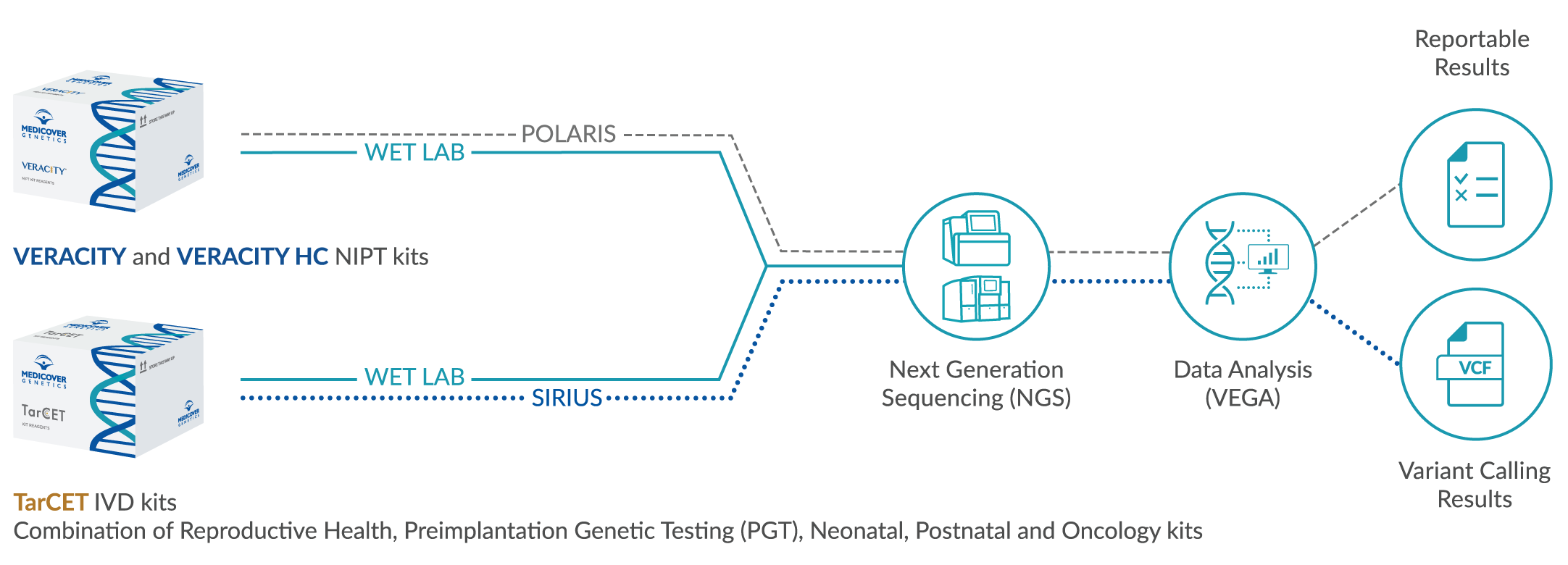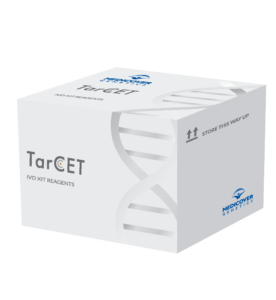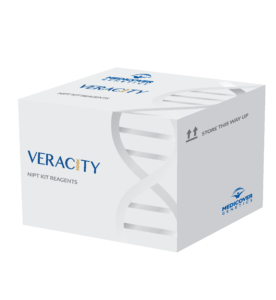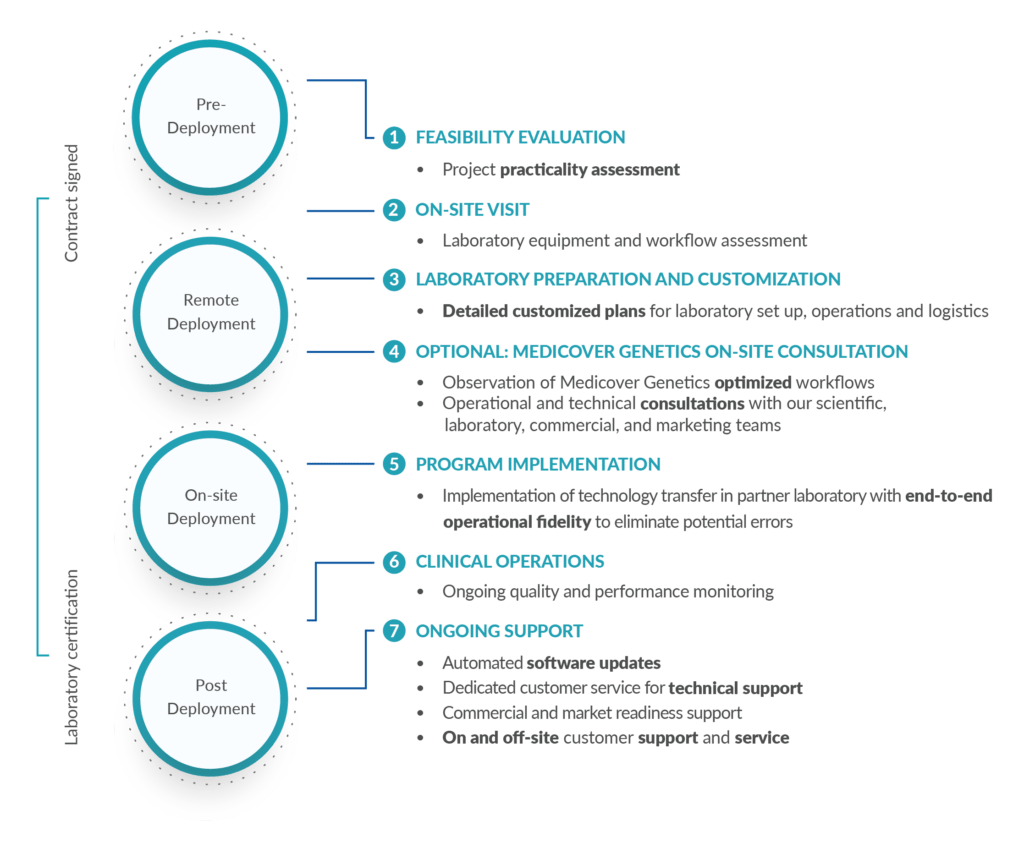In real-time PCR, the increase in PCR products can be monitored in real-time using fluorescent dyes. It is often used for quantitative analyses (qPCR). Additionally, it is employed for the detection of known variants. Detection is performed via sequence-specific probe hybridization and fluorescence resonance energy transfer (FRET). The genotype is determined through melting curve analysis (LightCycler®) or dot blot analysis (TaqMan®).
Real-time PCR is used for the quantification of gene segments or transcripts (quantitative real-time PCR, qPCR). Commonly used devices include the LightCycler (Roche), LightCycler 480II (Roche), TaqMan 7900HT (Life Technologies), and ViiA7 (Life Technologies). These devices detect PCR products via fluorescence signals, either in a sequence-independent manner (e.g., using SYBR Green) or sequence-specific using fluorescence labeled probes. The excitation is achieved via lasers, LEDs, or halogen lamps. For sequence-specific detection, probes complementary to a segment of the DNA or cDNA being analyzed are used. The increase in fluorescence signal during the reaction is proportional to the amount of PCR product generated and can be monitored in real-time as the reaction progresses.
qPCR can be used to analyze chromosomal fusion genes or their transcripts, which are associated with many forms of leukemia and lymphoma and play an important role in disease monitoring. This makes it possible, for example, to track teatment response in BCR-ABL-positive leukemia with Imatinib or PML/RARα-positive promyelocytic leukemia with ATRA. Additionally, aberrant cell clones, in the context of minimal residual disease (MRD), can be detected with high sensitivity.
The detection of known polymorphisms and mutations using LightCycler® technology is performed from genomic DNA through PCR amplification, probe hybridization, and subsequent melting curve analysis. For the detection of variants, a fluorescence-labeled probe pair is required, consisting of a donor probe and an acceptor probe. Their sequences are designed to bind in close proximity to each other on the PCR fragment. The fluorescein molecule of the donor probe is brought into spatial proximity to the fluorescent dye of the acceptor probe (e.g., LC-Red640).
Upon excitation of fluorescein at 470 nm, energy is transferred to the adjacent dye via fluorescence resonance energy transfer (FRET), which then emits fluorescence signals at its characteristic wavelength. These signals are measurable as long as both probes remain bound to the complementary sequence.
The genotype is determined through melting curve analysis. After the PCR reaction is complete, the temperature in the reaction mixture is gradually increased, causing the probes to dissociate (melt). This interrupts the fluorescence resonance energy transfer, resulting in a decrease in fluorescence emission. The loss of fluorescence signal at a specific temperature is used to determine the genotype.
When a single base mismatch is present, the probe melts at a lower temperature than in cases of fully homologous base pairing. As a result, melting temperatures differ between various genotypes. The homozygous wild-type genotype (wt/wt) or the homozygous variant genotype (mut/mut) displays a single melting curve peak, whereas the heterozygous genotype (wt/mut) shows both signals.
Another method for detecting known single nucleotide exchanges or point mutations is allele-specific hybridization with fluorescently labeled DNA probes (allele-specific oligonucleotide hybridization or ASO). In this technique, both a wild-type-specific probe and a mutation-specific probe are added to the PCR reaction. The fluorescence becomes visible only after the specifically bound probe is degraded by DNA polymerase during strand elongation, releasing the fluorescent molecule.
Depending on whether the wild type or the variant/mutation is present, different color signals are obtained, which are detected by a photodetector after excitation with laser light. The genotype is determined using dot blot analysis.
WAYS TO PARTNER WITH US
TarCET IVD Kits
CE-IVD kits containing reagents
for hereditary indications in
an easy-to-use kit form
Technology Transfer
Out-of-the-box genetics workflow
from sequencing to reporting
for non-invasive prenatal testing
Contact Us
Please get in touch with us
for any questions, inquiries,
feedback, or with any
comments you might have.
BLOG ARTICLES





















